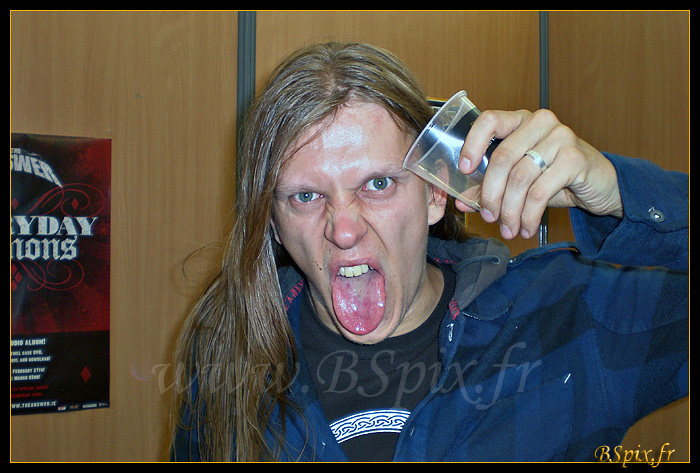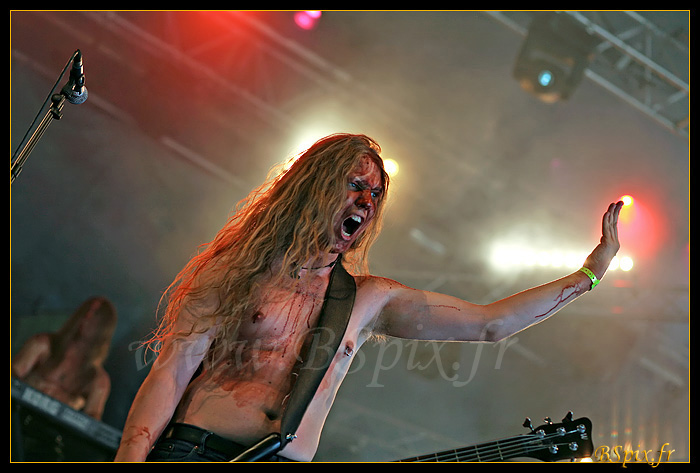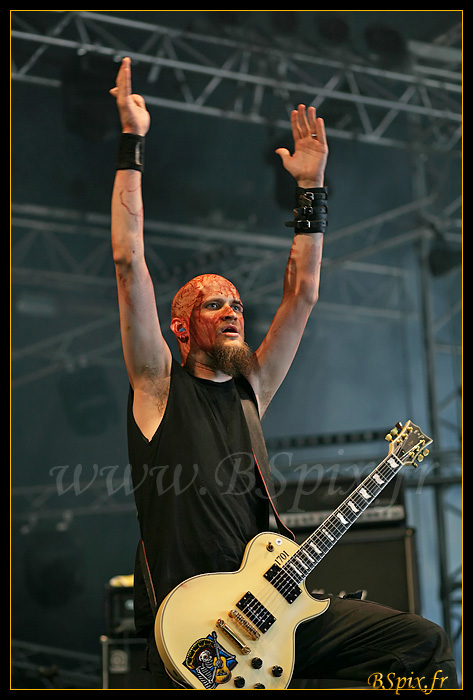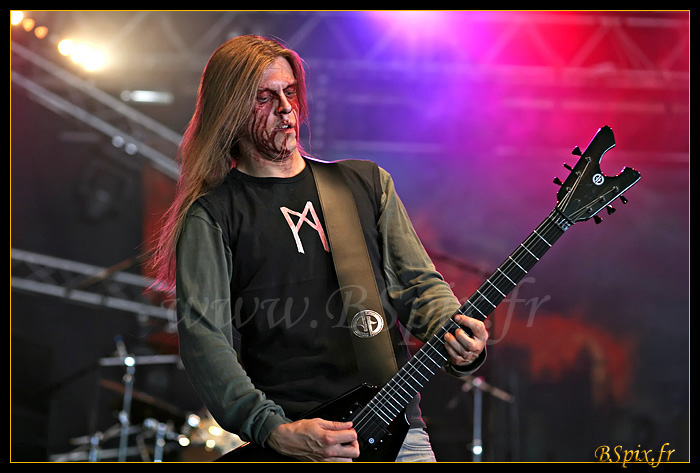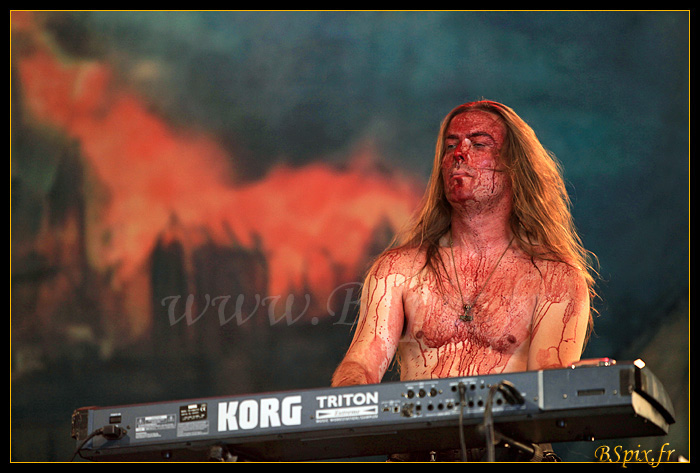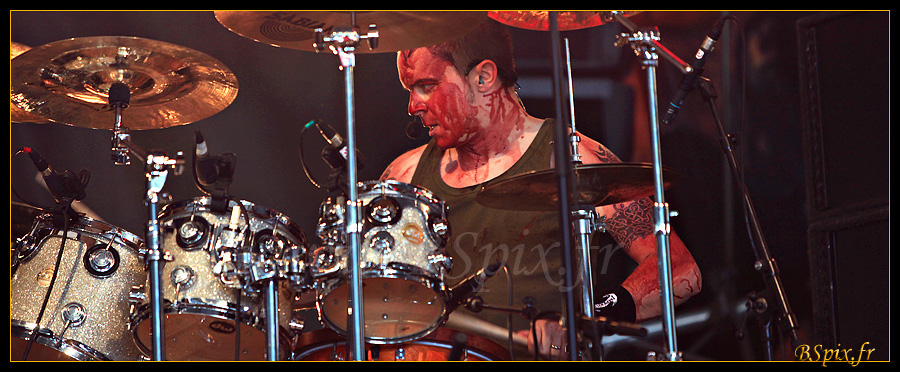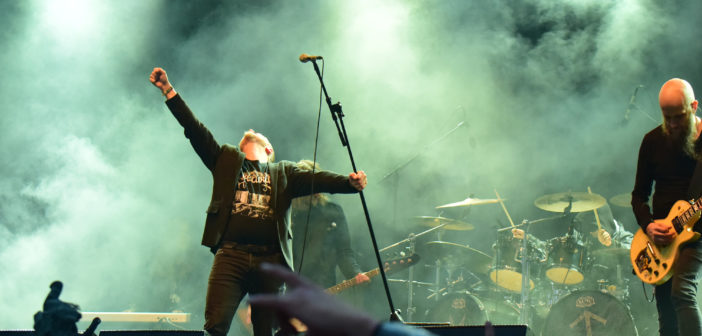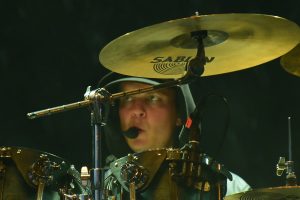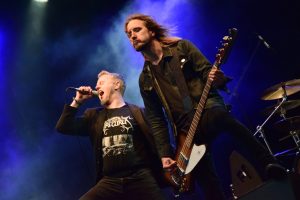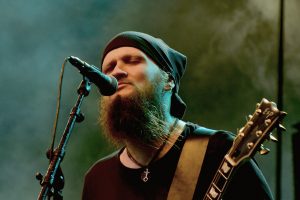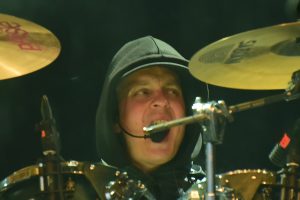LINK
Korpiklaanin ja Ensiferumin kaltaiset yhtyeet loivat uuden, maailmalla menestyneen musiikkityylin – mutta monelta tämä jäi huomaamatta
Ensiferum, Korpiklaani, Finntroll, Moonsorrow ja Turisas ovat tehneet folk metalia tunnetuksi maailmalla.
folk metal 3.5.2020 klo 20.13
Ensiferum taisteluhymneineen, Moonsorrow pakanallisine riimeineen, Finntroll peikkolauluineen, Korpiklaani kalevalaisine ralleineen ja Turisas eeppisine sotahuutoineen.
Markus Laakson Folk Metal Big 5 -kirjassa ääneen pääsevät kotimaisen folk metalin viisi isoa nimeä.
– Kyse on pioneereista, jotka porskuttavat edelleen oman tyylilajinsa aallonharjalla.Nämä yhtyeet tekevät toisistaan poikkeavaa musiikkia, mutta kuuluvat saman kattogenren eli folk metalin alle. Tämä on mielestäni mielenkiintoinen ilmiö ja sitä kannatti tutkia vähän enemmän ja vähän tarkemmin, Laakso kertoo kirjansa synnystä.
Ensiferum
Vuonna 1995 perustetun Ensiferumin läpimurtoalbumi oli vuonna 2007 julkaistu Victory Songs. Albumi hohkaa sotaisaa tunnelmaa ja taistelutahtoa, kuten yhtyeen visuaalinen imagokin. Terhi Ylimainen
Esikristillisyyden ihannointia
Folk metal -boomin varhaisvaiheet sijoittuvat 1990-luvun puolivälin tienoille. Genren ehdottomana primus motorina ja inspiraation lähteenä on toiminut Amorphis-yhtyeen toinen albumi, Tales From the Thousand Lakes (1994).
Siinä metalliin yhdistetään ennakkoluulottomasti ja aivan uudella tavalla niin kansanmusiikkimelodioita, Kalevalan tekstejä kuin suomalaisen mielenmaiseman useita eri tasojakin.
– Amorphista ei ole koskaan laskettu varsinaiseksi folk metal -yhtyeeksi, mutta Tales from the Thousand Lakesin jälkeen rupesi tulemaan bändejä, jotka ottivat siitä mallia ja jotka kokivat, että hei, tämä suomalaisuushan on ihan hieno juttu – ei sitä tarvitse millään tavalla hävetä, Markus Laakso sanoo.
Laakson mukaan ei ole mikään ihme, että tällainen genre ponkaisi maailmalle nimenomaan Suomesta.
– Kalevalaa pakotettiin lukemaan koulussa, mutta kun sen löysi itse vaikkapa Tales from the Thousand Lakesin kautta, siitä tulikin siisti juttu. Lisäksi suomalaiset kansanmusiikkikappaleet ovat melodioiltaan tarttuvia, ja niistä kuuluu slaavilainen sävelperinne. Ehkä tämä melodisuus ja tarttuvuus on tätä kautta siirtynyt myös alan kotimaisiin bändeihin.
Markus Laakso, Folk Metal Big 5
Kirjailja Markus Laakson mukaan folk metal tarjoaa mahdollisuuden paeta ankeaa arkea toiseen kiehtovaan maailmaan. Petri Damstén
Folk metalin alle on niputettu musiikkinsa puolesta melko sekalaistakin seurakuntaa: esimerkiksi Finntroll yhdistelee black metalia ja humppaa, kun taas Ensiferum on ottanut vaikutteita melodisesta death metalista. Moonsorrow'lta löytyy kuorosovituksia ja klassisen musiikin elementtejä, Korpiklaanin metallia taasen ryydittävät kotimaiset perinnesoittimet.
Markus Laakson mielestä folk metalin kohdalla kannattaisikin puhua pikemminkin monisyisestä kulttuuri-ilmiöstä kuin pelkästä yksittäisestä genrestä. Yhdistäviin tekijöihin kuuluvat muun muassa vahvat kytkökset 1700-luvun eurooppalaiseen romantiikkaan ja siinä samalla kansallisromantiikkaankin.
– Folk metalista löytyy luonnonläheisyyden, esikristillisyyden ja sankarillisuuden ihannointia. Taiteenlajeina folk metal ja romantiikka ovat sukua toisilleen – toiset yhtyeet tuovat esille enemmän suomalaisuuden, toiset vaikkapa viikinkiajan romantisointia.
Finntroll
Ruotsiksi laulava Finntroll on rakentanut musiikillisen universuminsa peikkomytologian varaan. Jarmo Katila
Kun lavalla roiskuu veri
Folk Metal Big 5 -kirjasta löytyy runsaasti herkullisia kuvauksia aloittelevien kotimaisten folk metal -yhtyeiden toisinaan viinanhuuruisistakin ensiaskeleista, joita leimasi usein kokeilunhalu ja kunnianhimo.
Turisas, jonka nimi viittaa hämäläiseen sodanjumalaan, käytti aluksi punamustiin sotamaalauksiinsa akryylivärejä, jotka kuitenkin ärsyttivät ihoa. Sitten yhtye siirtyi aitoon naudanvereen, joka valitettavasti sottasi paikkoja ja löyhkäsi. Passeli vaihtoehto löytyi sittemmin teatteriverestä. Massiivista keikkarekvisiittaansa yhtye rahoitti luovalla tavalla: se myi yleisölle Mehukatti-kanistereihin pakattua itsetehtyä metsämansikkakiljua 15 markan kappalehintaan.
Kaoottisista keikoistaan tunnetulla Finntrollilla oli alkuaikoina periaate, jonka mukaan show oli kelvoton, jos yhtyeen jäsenet eivät tapelleet lavalla ja nenästä ei otettu senkkaa. Välillä verta tosin roiskui myös yleisön suunnasta.
Moonsorrow teetätti Kivenkantaja-albuminsa (2003) kansikuvaa varten satoja kiloja painavan riimukiven, jonka kuljettaminen kuvauspaikalle osoittautui haasteelliseksi. Kivi saatiin vaivoin rahdattua metrin päähän tienpientareesta, jolloin syntyi vaikutelma ikimetsän syövereissä uljaasti pönöttävästä muinaismuistosta. Rytäkässä hajosivat myös vanhemmilta lainatut kottikärryt.
Ville Sorvali, Moonsorrow, folk metal
Moonsorrow-yhtyeen Ville Sorvalia kiehtovat etenkin Odinin riimut ja se, kuinka ihmiskunta on janonnut uutta tietoa, kuinka on keksitty kieli ja kuinka on opittu kirjoitustaito.Jussi Mankkinen / Yle
Vuonna 2008 tilanne oli jo hyvin toisenlainen. Moonsorrow, Finntroll, Korpiklaani, Ensiferum ja Turisas kiersivät viiden muun ulkomaalaisen yhtyeen kanssa Paganfest-kiertueen tiimoilta Eurooppaa ja Pohjois-Amerikkaa loppuunmyydyille saleille lähes kahden kuukauden ajan. Suomalainen folk metal oli muutamassa vuodessa kasvanut suuren luokan kansainväliseksi ilmiöksi.
– Suosion nousu oli iso yllätys, koska en ajatellut yhtään mitään koko ilmiöstä. Ei oikeastaan ollut mitään ilmiötä – me vain teimme omaa juttuamme, kuten muutkin bändit. Joku meidät sitten niputti yhteen, Moonsorrow'n laulaja-basisti Ville Sorvali toteaa.
Mooonsorrow, folk metal
Moonsorrow-yhtyeen jäsenten musiikkimakua yhdistää viehtymys black metaliin. Mikael Karlbom
Eddan ja Kalevalan syvissä vesissä
Ville Sorvalin serkku, Moonsorrow'n kitaristi Henri Sorvali on luonnehtinut folk metal -genreä matkamuistometalliksi. Kotimainen folk metal koetaan muualla maailmassa kiinnostavammaksi ja eksoottisemmaksi kuin Suomessa, koska meiltä löytyy tällaista estetiikkaa yllin kyllin omasta takaa. Samasta syystä turisteja kiinnostavat esimerkiksi porontaljat, meitä suomalaisia välttämättä eivät.
– Kun suomalaisuus jätetään pois, pureudutaan folk metalissa toki yleisemmällä tasolla hyvin syvälle myyttien ja kulttuurisen historian maailmaan. Ihmisiä kiinnostavat omien juurien lisäksi koko ihmiskunnan juuret, koska kaikki ovat nykypäivänä etääntyneet paitsi luonnosta myös omasta alkuperästään, Ville Sorvali pohtii.
Sorvali itse on hakenut inspiraatiota muun muassa muinaisen Islannin suunnalta.
– Kiinnostuin kansantaruista Eddan ja Kalevalan kautta. Sanoituksieni lähtökohtana on ollut pyrkimys luoda hyviä tarinoita. Tietyt ydinasiat ovat olleet lyriikoissani oikein, lopun olen värittänyt. En ole esimerkiksi välittänyt siitä, kuinka tarkasti olen jonkun Lallin tarinan kertonut, koska kukaan ei tiedä, mitä oikeasti tapahtui.
Sorvalin mukaan historia tarjoaa katsausta myös karmeisiin virheisiin.
– Olisi suotavaa, että ihmiskunta oppisi jotakin virheistään. Tälläkin hetkellä me elämme yhden tällaisen virheen seurausten kanssa.
Korpiklaani
Korpiklaanille suunniteltiin aluksi englanninkielistä Wood's Clan -nimeä. Napalm Records -levy-yhtiö piti kuitenkin enemmän suomalaisesta versiosta. Harri Hinkka
Suomalaisesta muinaisuskosta rempseisiin juomalauluihin
Markus Laakson mukaan viiden kotimaisen folk metal -yhtyeen kansainvälistä merkitystä tai musiikillista perintöä lukuisine jäljittelijöineen ei oikein ole ymmärretty Suomessa. Ilmiö ohitettiin kotimaisessa mediassa aikoinaan varsin suoraviivaisesti, ja kaikki Folk Metal Big 5 -kirjan bändit ovat olleet ja ovat edelleen huomattavasti isompia nimiä ulkomailla kuin koto-Suomessa.
– Kyllähän nämä yhtyeet vetävät täälläkin porukkaa täysille tuville, mutta Saksan isoilla festareilla, kuten Wackenilla, kyseisiä bändejä kuuntelevat samanaikaisesti useat kymmenet tuhannet ihmiset.
Laakson mukaan folk metal -yhtyeiden kohdalla kannattaa huomioida myös kulttuuriviennin merkitys.
– Väittäisin, että näiden yhtyeiden innoittamina sadat, jopa tuhannet ihmiset ovat ruvenneet opiskelemaan suomen kieltä ja ryhtyneet ottamaan haltuun suomalaista historiaa ja kansanuskomuksia.
Jonne Järvelä, Korpiklaani, folk metal
Korpiklaanin Jonne Järvelän mukaan yhtyeen uusimmassa musiikissa kuuluu kaikuja myös Reino Helismaasta ja Tapio Rautavaarasta: – Biiiseistä kuvastuu suomifilmimeininki ja reissuromantiikka, ja ollaan ehkä tultu vähän lähemmäksi maanpintaa. Jussi Mankkinen / Yle
Kotimaisilla folk metal -suuruuksilla on myös aidosti kansainvälinen ja huomattavasti laajempi yleisöpohja kuin vaikkapa Suomen suosituimmilla poppareilla. Korpiklaanin Vodka-videolla esimerkiksi on Youtubessa yli 36 miljoonaa katselukertaa.
– Olemme saavuttaneet tähän mennessä paljon enemmän kuin alun perin odotimme. Meidän musiikistamme löytyy hanuria ja viulua, ja kaiken lisäksi laulamme suomeksi, mutta kuitenkin saamme kiertää Yhdysvaltoja niin paljon kuin haluamme. Oikeastaan joudumme jopa hillitsemään kysyntää perhesyiden takia – eikä maksakaan varmaan kestäisi, Korpiklaanin laulaja-kitaristi Jonne Järvelä toteaa hymyillen.
Yhdysvalloissa Järvelä on kiinnittänyt huomiota etenkin yhteen yleisösegmenttiin.
– Olemme esiintyneet myös reservaateissa, ja koska musiikissamme on mukana paljon shamanismia ja luontotematiikkaa, tarjoaa se tarttumapintaa Amerikan alkuperäiskansoille.
Korpiklaani on aina liikkunut musiikissaan vakavasta vähemmän vakavaan. Suomalaisen muinaisuskon maailmoista yhtye on hypännyt juomalaulujen rempseisiin tunnelmiin.
– Ei tämä ole mitenkään vaikeaa, koska muusikkoina meistä löytyvät nämä molemmat puolet. Olemme lähtökohtaisesti maalaispoikia, mutta siitä huolimatta pystymme liikkumaan sujuvasti maailman metropoleissa. Meissä on kiertueilla näkyvä villimpi puoli, mutta kotona ollaan sitten kiltimmin, Järvelä toteaa.
Ensiferum
Ensiferum vuonna 2006. Toni Härkönen
Luonnon ehdoilla
Kuopiossa asuvalle Markus Laaksolle sukeltaminen kotimaisen folk metalin vaiheisiin on antanut paljon.
– Perehdyin melko syvällisesti aiheisiin, joista nämä bändit laulavat, ja huomasin innostuvani uudella tavalla esimerkiksi Suomen keskiaikaisesta historiasta sekä Turisaksen myötä myös Venäjän seudun viikinkireiteistä. Tämän prosessin aikana myös suhteeni luontoon on tiivistynyt: kävelen päivittäin Puijon luonnonsuojelualueella ja fiilistelen.
Luonto on oleellinen elementti myös folk metal -bändeille.
– Korpiklaanin musiikin tarkoituksena ei ole kyseenalaistaa muuta kuin suhdettamme luontoon. Luonnon yleinen arvostus puuttuu, ja oikeastaan kaikkia arjen valintoja pitäisi miettiä myös luonnon kannalta, Jonne Järvelä painottaa.
Ville Sorvali on samaa mieltä.
– Vaikka olenkin kaupungin kasvatti, luonto on aina ollut lähellä sydäntäni. Tunnen luontoa kohtaan suurta kunnioitusta, ja etenkin näinä aikoina soisin kaikkien muiden tuntevan samoin.
